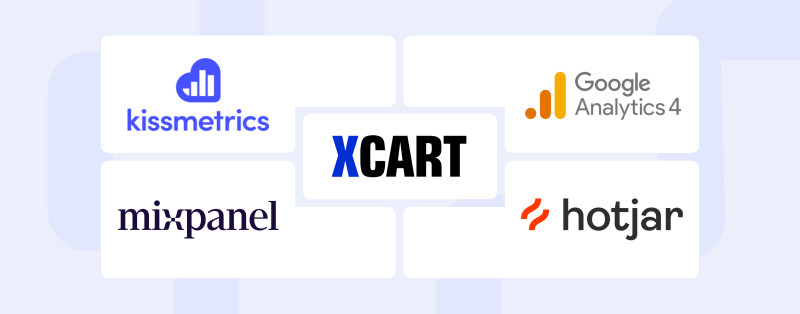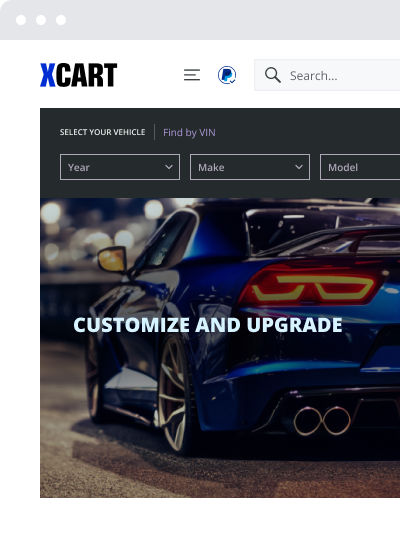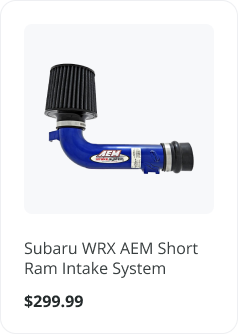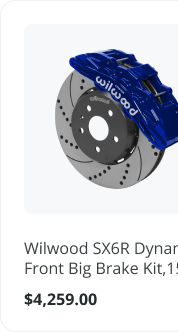Best eCommerce Analytics for Your Auto Parts Store
The online auto parts market is accelerating fast. In 2024, the global automotive eCommerce market reached $100.14 billion, with the automotive aftermarket (parts and accessories) projected to soar from $116.24 billion in 2025 to $343.13 billion by 2029, an annual growth rate of about 16.7%.
In the U.S. alone, online automotive sales from retailers and marketplaces will surpass $65 billion by 2030. Clearly, auto parts eCommerce isn’t niche anymore, it’s a massive opportunity.
But succeeding isn’t as simple as listing parts and waiting for sales. You’re managing vast catalogs (thousands or even millions of SKUs) and dealing with critical fitment accuracy, matching parts precisely to customers’ vehicles by year, make, model, engine type, bolt patterns, and more.
So, you need to know how your online store performs, and that it performs better than your competition. Your online automotive store can’t run on autopilot; it needs smart, data-driven assistance and solutions that measure and report traffic, visitor origins, user interactions, and performance, showing clearly what’s working and what isn’t.
Let’s take a look at these co-pilots, the best eCommerce analytics tools for your auto parts store.
Why is eCommerce Analytics So Important for Your Auto Parts Store?
Running an automotive eCommerce business without eCommerce analytics is like trying to tune a high-performance engine blindfolded.
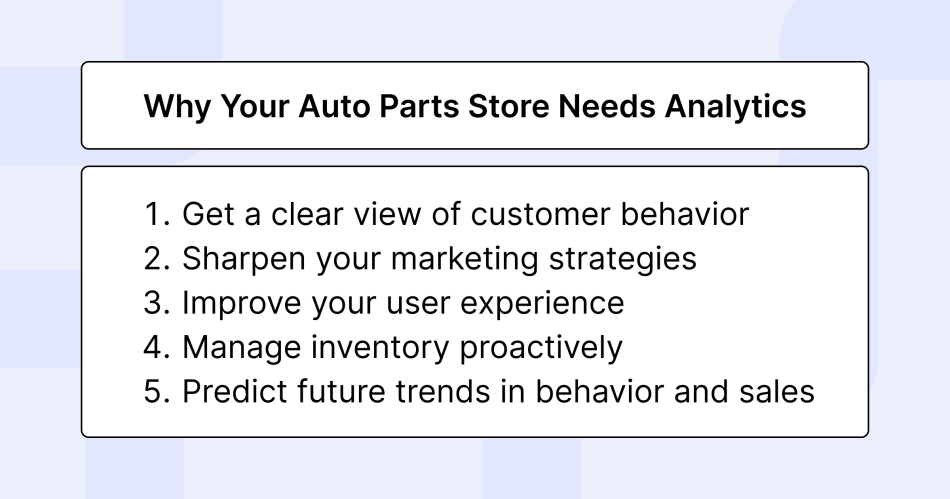
First, eCommerce analytics tools give a clear view of customer behavior. By tracking relevant eСommerce KPIs (Key Performance Indicators), you gain valuable insights into shopper preferences and buying habits. Analyzing customer data, such as browsing and purchase history, helps you understand your audience on a deeper level and allows you to adjust marketing efforts and auto parts product offerings.
Second, eCommerce data analytics sharpens your automotive marketing strategies. You can track the effectiveness of marketing campaigns in real time, analyze data and key metrics like click-through rates and conversion rates, and identify which marketing channels drive the most online sales. As a result, you have all the information to decide how to optimize your marketing spend for better ROI.
Third, eCommerce data analytics helps improve your online store’s user experience (UX). The automotive aftermarket has complex catalogs, so you need to analyze website traffic and navigation patterns to identify usability issues, like a confusing YMM search. Insights from analytics data show how you can optimize your site, achieve higher customer satisfaction and customer loyalty, as well as better conversion rates and repeat business.
Fourth, eCommerce analytics tracks product performance and demand trends for better inventory management. You can take a look at your sales data and identify patterns like seasonal fluctuations to optimize inventory, minimize stockouts and overstocking costs, and ensure you meet customer demand.
Fifth, predictive analytics, often part of advanced eCommerce analytics tools, helps forecast future trends based on historical data. With it, your decisions become data-driven regarding many things: inventory, auto parts pricing, or new product development.
The Different Flavors of eCommerce Analytics: From What Happened to What We Should Do
eCommerce analytics tools are different, and they answer different questions, helping your automotive ecommerce business in unique ways.
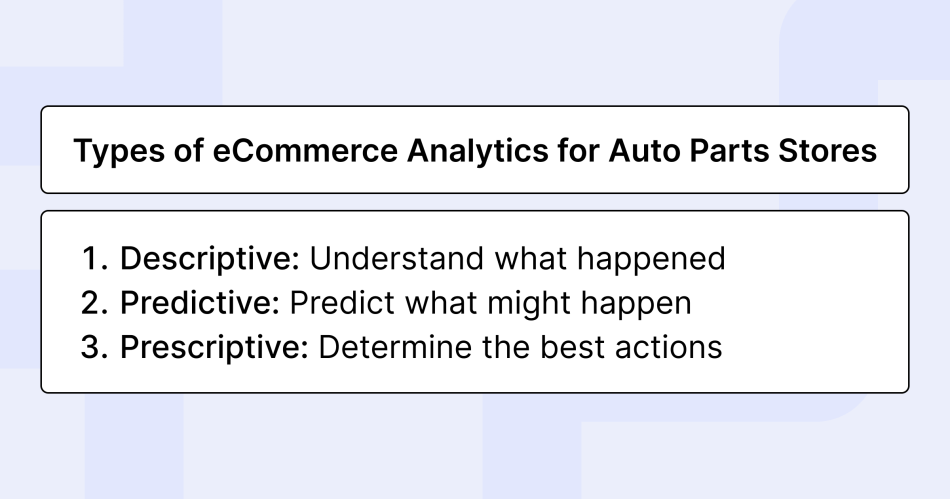
1. Descriptive Analytics: What Happened?
This is your rearview mirror, summarizing historical data to show what occurred in your online business. It answers questions like:
- What were our total online sales last month for brake pads?
- What was our average order value (AOV) during the holiday promotion?
It looks at key metrics such as total website traffic, conversion rates, sales revenue, and customer acquisition cost (CAC). For example, it might show that sales for performance air intakes increased by 15% after a new marketing campaign. Thus, you get a foundational understanding of your performance.

Or it might show you the average demographic profile of users visiting your website every day. A big part of the automotive eCommerce boom comes down to how people shop these days. More and more, especially the 25 to 40-year-old segment, who make up 57% of online auto part sales, are turning to the internet to research and buy what they need for their rides.
Plus, 70% of car research now happens on mobile devices. People love the convenience of shopping from home, the variety available in an online store, and often, the competitive pricing.
So the descriptive data is incredibly valuable for understanding whether you attract relevant audiences, as it shows what groups of people you attract, what devices they use, what time of the day is the most popular for shopping, and more.
2. Predictive Analytics: What Could Happen?
This is your GPS, forecasting future outcomes using the same historical data, statistical algorithms, and machine learning. It answers questions:
- What is the likely demand for snow tires next quarter?
- Which customer segments are most likely to churn?
For your auto parts store, it could forecast demand for DIY oil change kits or predict that customers buying performance exhausts are likely to buy cold air intakes. Predictive analytics allows you to be proactive in auto parts inventory management, marketing campaigns, and resource allocation.
3. Prescriptive Analytics: What Should We Do About It?
Here’s an experienced mechanic, recommending specific actions. Prescriptive analytics suggests the best course of action using predictive models, algorithms, and business rules, answering questions like:
- What’s the optimal reorder quantity for Part #ABC?
- What discount should we offer to an abandoned cart to maximize conversion?
For your store, it might recommend offering free shipping over $200 for performance brake kits to reduce cart abandonment. These clear insights and data-driven recommendations relieve you from analyzing vast data manually before taking a step.
So, these types of analytics help build a comprehensive analytics strategy:
- Understand what happened (descriptive)
- Predict what might happen (predictive)
- Determine the best actions (prescriptive)
This progression allows continuous learning and optimization of business performance.
Best eCommerce Analytics Tools for Your Auto Parts Store
Choosing the right analytics tools for your automotive eCommerce business is the first step in taking a data-driven path. Here are some top options:
1. Google Analytics (GA4)
This tool is essential for understanding visitors, their origins, interests, and customer behavior. GA4 gives detailed eCommerce tracking (acquisition, engagement, monetization, retention), user and traffic acquisition reports, behavior reports (page visits, bounce rates), conversion tracking, audience segmentation, and tracking for Automotive Standards Council (ASC) events (like YMM interactions, form submissions, item details like make, model, fuel type).
Google Analytics’ Pros
Free, integrates with Google Ads, customizable, and integrates with automotive eCommerce platforms like X-Cart.
Google Analytics’ Cons
Steeper learning curve for advanced features, an enhanced ecommerce setup can be complex.
Google Analytics’ Pricing
Free; paid Google Analytics 360 for large enterprises.
Google Analytics’s Best for
Almost any automotive eCommerce business.
2. Hotjar
Hotjar provides qualitative insights into user experience. Its key features are heatmaps (clicks, scrolls), session recordings (see YMM search struggles), surveys & feedback polls (post-YMM search satisfaction), conversion funnels, and frustration signals (rage clicks).
Hotjar’s Pros
Excellent for UX understanding, qualitative marketing data.
Hotjar’s Cons
Free plan limitations; premium can be pricey.
Hotjar’s Pricing
Free basic plan; paid “Observe” plans start at $80/month (billed annually).
Hotjar’s Best for
Improving UX, understanding conversion blockers, and optimizing YMM selectors.
3. Mixpanel
Our next tool tracks user interactions (events) to understand engagement, conversion, and retention. It’s best at event tracking (“Selected Vehicle Year,” “Viewed Part Diagram”), funnel analysis (YMM search, checkout), retention reports, user segmentation, and flows report (common user paths).
Mixpanel’s Pros
Excellent for behavioral analysis and powerful segmentation.
Mixpanel’s Cons
Complex setup (event tracking often needs developers); can get expensive.
Mixpanel’s Pricing
Free plan (up to 20M monthly events); Growth plan from $20/month; Enterprise from $1,667/month.
Mixpanel’s Best for
Deep user behavior understanding, optimizing YMM search funnels.
4. Kissmetrics
Kissmetrics tracks customer behavior throughout the customer journey, focusing on customer lifetime value (CLV). It offers funnel reports, customer segmentation (DIY vs. mechanics), A/B testing, revenue tracking (CLV, average revenue per person), and path reports.
Kissmetrics’ Pros
Strong on individual journeys and LTV.
Kissmetrics’ Cons
Can require developer setup, higher pricing for small businesses.
Kissmetrics’ Pricing
Starts from $299/month (Silver plan).
Kissmetrics’s Best for
Optimizing the entire customer journey and increasing customer lifetime value CLV.
Tools for Deeper Dives & Specific Needs
- Glew: Powerful ecommerce analytics tool for customer & product insights, unifying data from 170+ integrations. Features dynamic customer segmentation, LTV, and automated segment syncing. Pricing starts at $79/month (revenue-based).
- Other BI tools (Tableau, Looker, Domo): For medium to large businesses needing advanced custom dashboards from various data sources.
Comparison of Automotive eCommerce Analytics Tools
| Tool | Focus | Starting Price (Monthly) | What’s There for Auto Parts |
| Google Analytics (GA4) | Website & eCommerce traffic, behavior | Free | eCommerce tracking, ASC events, audience segmentation |
| Hotjar | User experience, visual behavior (heatmaps) | $0 (Basic), $80 (Business) | Optimizing YMM search, checkout, and user frustration |
| Mixpanel | Product/event analytics, funnels, retention | $0 (Free), $20 (Growth) | YMM search funnel optimization, part interactions |
| Kissmetrics | Customer journey, CLV, person-centric analysis | $299 (Silver) | Long-term value of customer types, funnel analysis |
| Glew | Unified commerce intelligence, customer analytics | $79+ (revenue-based) | Advanced segmentation, LTV, product bundling |
Usually, you will need a team to manage the setup of analytics tools if it’s complex, like advanced segmentation or YMM funnel optimization. Some tools, like X-Cart Automotive, come with a dedicated custom development team that can make adjustments with perfect knowledge of their product.
KPIs to Keep Your Eyes On: Your Automotive eCommerce Dashboard
The best thing to do is to focus on numbers that truly matter for your automotive eCommerce business. These eCommerce analytics metrics are vital signs for your online store.
Sales & Revenue Performance Metrics
- Total revenue (gross & net): Gross is total sales; Net is after discounts and returns. It’s a basic measure of business performance. Try to aim for consistent growth, like 8% annually for auto parts.
- Average order value (AOV): Average amount spent per order (Total Revenue / Number of Orders). Increasing AOV boosts revenue per transaction. You can improve it with bundles and cross-sells.
- Conversion rate (CR): Percentage of visitors who purchase ((Transactions / Visitors) x 100%). Shows website effectiveness. Auto parts target is 8-15%, and can be improved with YMM search and fitment data.
Customer Behavior & Engagement Metrics
- Website traffic: Total visitors and sources (organic, paid, etc.). More relevant traffic = more sales opportunities.
- Bounce rate: Percentage of single-page visits. High rates can indicate irrelevant landing pages or poor navigation.
- Cart abandonment rate (CAR): Percentage of carts created but not purchased. High CAR indicates checkout friction or unexpected costs.
Marketing & Acquisition Metrics
- Customer acquisition cost (CAC): Total cost to acquire a new customer ((Marketing + Sales Expenses) / New Customers). Auto parts average CAC is around $78.
- Click-through rate (CTR) (for ads): Percentage of ad impressions clicked. Indicates ad relevance. Auto parts Google Ads CTR: 2.69% – 11.41%.
- Return on ad spend (ROAS): Revenue per ad dollar (Revenue from Ad / Cost of Ad). Shows ad profitability. Target 300-500% for auto parts.
Customer Loyalty & Lifetime Value Metrics
- Customer lifetime value (CLV or LTV): Total net profit expected from a customer over their relationship ((Avg Purchase Value) x (Avg Purchase Frequency) x (Avg Customer Lifespan)). Guides acquisition and retention investment.
- Customer retention rate: Percentage of existing customers who continue buying. Cheaper to retain than acquire.
- Churn rate: Percentage of customers who stop buying. High churn hurts growth.
Operational & Inventory Metrics (Especially for Auto Parts)
- Inventory turnover ratio: How often inventory is sold/replaced (COGS / Avg Inventory). Industry average: 5-6 times/year.
- Order fulfillment time: Order placement to delivery. Fast shipping boosts customer satisfaction. Aim below 48 hours.
- Return rate (especially due to fitment): Percentage of products returned. High fitment returns indicate data/YMM search issues. Good fitment data can reduce returns by up to 30%.
Download the guide: Your Complete Guide to Fitment Data Precision
Putting the Pedal to the Metal: Strategies Using Your Analytics Data
When you get analytics data, the next step is to turn it into concrete strategies to boost your automotive eCommerce business performance. Here are some things you could do:
Optimizing Your Year-Make-Model (YMM) Search Funnel
The YMM search is crucial, and you can use funnel analysis to track user progression and identify drop-off points. Analyze No Results Found to spot unmet demand or catalog gaps.
Also, if GA4 shows a 60% exit rate after “Vehicle Make” selection, simplify the “Model” selection step. Smoother YMM search boosts conversion rates, reduces fitment returns, and improves satisfaction and CLV.
Segmenting Your Customers for Targeted Marketing (e.g., DIY vs. DIFM)
Since not all buyers are the same, you can take advantage of analytics data (purchase history, viewed products) to create customer segments (DIYers vs. Professionals).
For example, if DIYers who watch your DIY Brake Pad Replacement video convert 20% higher, create more DIY content, and offer DIY kits. Such targeted marketing campaigns are more effective, improving engagement, conversion rates, and ROI, fostering customer loyalty.
Refining Marketing Campaigns with Performance Data
Continuously analyze campaign performance (CTR, Conversion Rate, CPA, ROAS). If Google Ads shows low ROAS for generic keywords like car parts but high ROAS for specific YMM + part type terms, shift the budget to long-tail keywords.
Enhancing Customer Experience & Reducing Cart Abandonment
Use tools like Hotjar for heatmaps/session recordings to find friction points and monitor GA4 for high exit rates. If GA4 shows 50% cart abandonment at the shipping step, you can offer transparent shipping costs earlier or free shipping thresholds.
Using Customer Data for Personalization & Retention
Another way to optimize your marketing efforts is to unify customer data (website behavior, purchase history) for detailed segmentation and personalized offers. Let’s say a customer buys OEM brake pads; customer data platforms might trigger an email a week later:
“Complete your brake job! Here are OEM rotors for your [Vehicle Y].”
Personalization is a sure way to increase engagement, conversion rates, customer retention, and CLV.
Common Challenges in Automotive eCommerce Analytics
eCommerce analytics sounds good, but it has its hurdles:
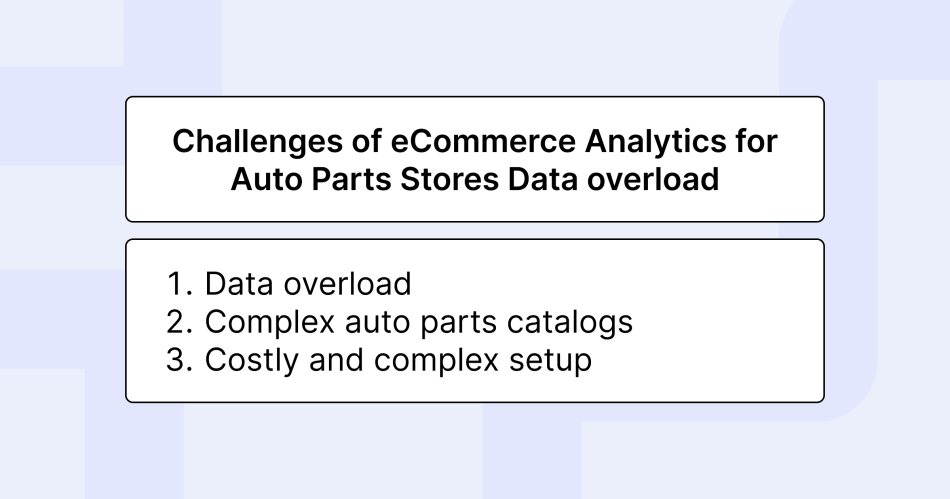
Data Overload and “Analysis Paralysis”
The sheer volume of eCommerce data is overwhelming; that’s why it’s often hard to extract actionable insights. Always focus on the key metrics instead of analyzing everything that comes your way. Your first steps could be setting up the dashboards that would only feature the main business performance numbers.
Plus, hiring an analyst and a developer for the setup will save you tons of time.
Complexity of Auto Parts Catalogs (Fitment, YMM, ACES/PIES)
Analyzing and managing data for millions of SKUs with detailed fitment requirements (year, make, model, engine, etc., often using ACES/PIES standards) is a massive task. If analytics can’t handle this granularity, insights will be superficial.
Inaccurate PIM/ACES/PIES data or poor integration between automotive PIM, ERP, and website leads to incorrect fitment, high returns, and damaged customer experience. Luckily, platforms like X-Cart have compliance built in and relieve you from the need to monitor every product yourself.
Lack of In-House Expertise / Resources
Effectively using automotive analytics requires a blend of eCommerce knowledge and understanding of automotive data intricacies (like VIN fitment), which smaller businesses might lack. Check if the platform you consider comes with a dedicated team that would support you all the way to the first insight.
Before you start setting up, it’s better to take your time and come up with a well-thought-out eCommerce analytics strategy focused on data quality, system integration, and relevant key metrics.
How X-Cart Supports eCommerce Analytics for Auto Parts
X-Cart is an automotive eCommerce platform for the unique demands of selling auto parts online. It focuses on automating complex fitment data management, handling inventory updates, and streamlining order fulfillment. That’s why it’s a strong contender for businesses that need robust and built-in automotive functionalities.
X-Cart’s Key Features for Automotive eCommerce
- Fitment data management offers native Make/Model/Year filtering and VIN lookup capabilities to ensure customers find compatible parts. It integrates with major aftermarket catalog providers like ASAP Network, AutoSync, and SEMA Data, so you get automated catalog imports and real-time updates of fitment details, prices, images, and descriptions.
- ‘My Garage’ feature allows customers to save their vehicle information instead of filling it in for every purchase.
- Inventory and order management features centralize supplier and data connections, synchronize stock levels across channels (including Amazon and eBay Motors), and allow for bulk inventory data editing. They support automated connections to stock suppliers for efficient order fulfillment and provide cross-channel stock transparency.
- SEO-friendly design means a solid website structure for better automotive search engine indexing and a mobile-responsive design compliant with Google’s mobile-first approach to search engine optimization.
- Marketing tools include prebuilt features like back-in-stock notifications and email marketing tools, with integrations for Google AdWords (via Segment) and Facebook/Instagram Ads.
X-Cart’s Analytics Support
While X-Cart provides tools for managing automotive-specific data, for deep analytics, it integrates with Google Analytics and other platforms for data-driven decision making.
With these integrations, you get pre-built dashboards and reports, giving insights into sales transactions and trends, customer analysis and engagement, and product inventory. Trend reports allow for month-over-month and year-over-year comparisons, and users can receive daily email updates.
X-Cart’s Pros
- Highly specialized for auto parts with strong fitment data automation, direct integrations with key automotive data providers, and robust inventory management tailored for the industry.
- No transaction fees are a plus.
X-Cart’s Pricing
The X-Cart Automotive plan starts at $999/month.
X-Cart’s Best for
Auto parts businesses that need a platform built from the ground up to handle the complexities of fitment data, large catalogs, and integrations with automotive industry data standards like SEMA Data. It’s suited for retailers who want to automate auto parts data management and streamline operations related to selling auto parts online, as well as work powerfully with analytics systems at the same time.
Make Data Work for Your Auto Parts Online Store
Ultimately, the automotive eCommerce companies that excel will cultivate a culture of data-driven decision-making across all departments. The marketing team can refine campaigns and sales, understanding customer segments, and inventory managers can optimize stock and customer service, addressing issues by analyzing customer feedback. The rule is: Analytics should be a shared language because actionable insights are valuable when understood and acted upon organization-wide.
This year is the best time to start exploring these tools and strategies and unlock the valuable insights in your eCommerce data. So, steer your business towards greater sales, stronger loyalty, enhanced satisfaction, and a prosperous future. The road to success is paved with data!
Frequently Asked Questions
1. Why should I bother with eCommerce analytics for my auto parts store?
Analytics tells you what customers actually do on your site: what parts they’re buying, what they’re ignoring, and where they’re getting stuck. It’s your roadmap to selling smarter and making customers happier.
2. My online store isn’t huge yet. Do I still need analytics tools?
Even small stores benefit from analytics. It helps you spot exactly what’s working (or not) so you can grow faster without wasting money or effort.
3. Can eCommerce analytics help reduce product returns for my store?
Yes. Good analytics tools pinpoint why returns happen, like incorrect fitment information. Fix those issues, and you’ll see fewer frustrated customers and fewer returns.
4. What’s the difference between Google Analytics and tools like Hotjar?
Google Analytics is your store’s sales report: It gives numbers and trends. Hotjar, on the other hand, is more visual. It shows you heatmaps and recordings of how people actually use your website. Together, they’re a powerful combo.
5. Is setting up analytics complicated? Can I do it myself?
Basic setups like Google Analytics are straightforward, but deeper integrations (especially for things like detailed fitment or customer segmentation) are tricky. It usually requires expert help.
6. Can analytics really help me predict what parts customers will want?
Absolutely. Predictive analytics looks at your past sales data to forecast trends, like knowing exactly when demand for winter tires or DIY oil-change kits will spike.
7. I have thousands of SKUs. Can analytics handle such a huge catalog?
Yes, especially if you pick the right tools. X-Cart pulls accurate automotive data and integrates with analytics solutions, and together they handle massive catalogs easily, making sense of all your complex fitment data.
8. Does analytics actually improve my marketing ROI?
Analytics reveals exactly which marketing channels and campaigns bring in the best customers. That means you’ll be able to make decisions to prevent wasting money on ads that don’t work and double down on automotive online marketing strategies that boost your sales.
About the author

